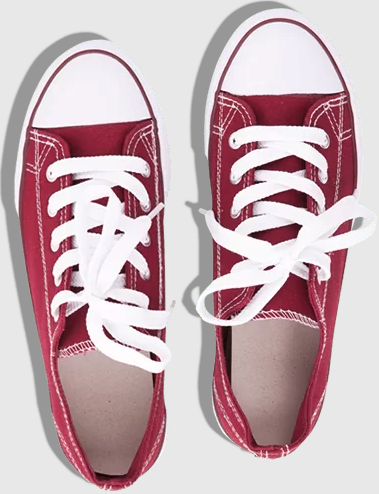Break Out of Your (Brand) Silos
What happens when a company has several different products, services, brands and departments, but needs to maintain the integrity of the brand companywide? It’s a common problem: marketing tries to be the glue that holds the brand together, but without organizational support, that glue ends up being more like a Band-Aid® that will eventually fall off to reveal the deep-seated scar in strategy.
David Aaker, one of my favorite authorities on branding strategy, is a well-known author and professor emeritus at the University of California, Berkeley. I ran across a video lecture of his about spanning silos. Silos, in this case, isn’t referring to the Bruce Clay methodology of grouping content on your website, it’s about the different components within a business and how they can make or break a brand.
And because I find his insight extremely relevant to any business, I thought I’d sum up some of the key points of the following video lecture below.
- So, what’s a brand to do?
- Brand management across silos: the objective
- FAQ: How can I effectively address brand silos within my organization to maintain brand consistency and success?
First, Aaker defines silos. He gives a general outline of what a silo could be within a business:
- Product silos
- Regional silos
- Business silos (departments)
The question is: How do you ensure your brand is upheld across silos? Aaker talks about the history of decentralizing the brand from one giant brand to compartmentalized brands working under a parent brand. Aaker says this decentralization began nearly 100 years ago when companies began realizing the effectiveness of marketing products differently, thus giving birth to different brands. But, Aaker argues that autonomous silos are no longer viable in today’s age.
He references Sony as being extremely innovative in the 80s, but in the past 20 years, has missed out on many opportunities to be first in technological advances. Aaker talks about a speaking engagement he held one summer where a Sony executive was in the audience. That executive said the reason the brand missed out was due to a lack of cooperation within the silos of Sony’s business. Point: having disjointed silos can affect your brand in big ways – even at the innovation level.
 |
So, What’s a Brand to Do?
Oftentimes, silos within businesses simply are not motivated enough to look at the big picture; rather, silos are driven solely by their own individual success because that’s what they are paid to do, says Aaker. So, how do you get everyone on board?
Many companies might look to the chief marketing officer (CMO) to fix the mess of the decentralized brand, but Aaker argues that CMOs aren’t solely the answer. He cites an average CMO role lasts 23 months and suggests this is due to the resistance by all the silos for a synergy of the brand. Along with an inadequate authority and budget, CMOs sometimes have their hands very full when trying to uphold a brand across silos.
Aaker says an aggressive CMO role consists of four things: CEO commitment, a clear business vision, a crisis, and a CMO change agent. He infers that the financial crisis the country is experiencing might be a motivation for change with the way companies are handling their brand.
But it’s not something that has to be accomplished overnight, he affirms. A brief overview of how Procter & Gamble continued to develop and change the way it approached branding as the company grew and developed. Aaker gives a quick case study to show how P&G continued to adapt. First, in the 80s, the company went from brand management of individual products to category management – a silo dedicated solely to all hair care products, for example.
Then in the 90s, P&G created global category teams to reduce the disjointedness between silos across geographic locations. Then in the 2000s, the company appointed global category managers, putting few people in charge of managing the category brands/silos across the globe.
Brand Management across Silos: The Objective
Centralization and standardization of a company’s brand are the wrong goals, warns Aaker. If reducing the number of divisions is the only goal, it’s the wrong one (he does say that reducing silos could potentially be part of the solution, but it shouldn’t be the goal). The goal, Aaker says, should be to address the silo-driven problems that are holding back the development of the brand as a whole.
Appropriate objectives are to uphold brand consistency, allocate resources properly, increase communication and so on. Some of the action items he suggests to accomplish this are:
- Build CEO and organizational support for the concept of having silos work together. You want to be an active part of the brand strategy by tapping into what the CEO deems worthy. Also show ROI – this always wins.
- Use teams. Decide how many teams and how to make them effective. Some of the qualities of a good team are good leaders, smart members and a good objective. He references P&G again and its success with teams. P&G teams continue to refine the mission as the project moves forward, to ensure everyone is on board and thinks it’s worthwhile.
- Make the silos work for you. Instead of barriers, silos should become assets. You can use ideas from individual silos, and then apply only the smartest ideas to the overall brand.
Aaker’s final thoughts: the CMO can’t do it alone; it takes an entire organization. Silos need to reach out to other silos, there needs to be a culture of communication, and silos need to support the programs set forth by the CMO team.
Ready to break out of your brand silos? Talk to us.
FAQ: How can I effectively address brand silos within my organization to maintain brand consistency and success?
Maintaining brand consistency and success is critical to long-term growth and customer trust. However, many organizations grapple with the challenge of brand silos, which can disrupt this consistency and hamper success. In this whitepaper, we will explore the concept of brand silos, and their impact on your organization and provide practical insights on how to effectively address and eliminate them, ensuring your brand remains strong and consistent.
Understanding Brand Silos
Brand silos are a common issue in organizations, especially in large corporations with multiple departments or teams. These silos occur when different parts of an organization operate independently, with minimal communication or coordination. This lack of cohesion can lead to inconsistencies in messaging, branding, and customer experience.
The Impact of Brand Silos
Brand silos can have far-reaching consequences. They often result in a lack of alignment between different departments, causing customer confusion, diluted brand messages, and diminished brand loyalty. Ultimately, they can hinder the growth and success of an organization.
Addressing Brand Silos: A Step-By-Step Approach
To effectively address brand silos within your organization and maintain brand consistency and success, follow these steps:
- Conduct a Brand Audit: Start by assessing the current state of your brand. Identify inconsistencies and gaps in messaging, visuals, and customer touchpoints.
- Establish a Centralized Brand Authority: Appoint a brand guardian or team responsible for ensuring consistency and clarity in brand messaging.
- Define Brand Guidelines: Create comprehensive brand guidelines that cover messaging, visual identity, and brand voice. Ensure these guidelines are accessible to all relevant teams.
- Cross-functional collaboration: Encourage collaboration and communication between different departments to ensure alignment with the brand’s core values and objectives.
- Regular Training and Workshops: Conduct training sessions and workshops to educate employees on the importance of brand consistency and how to implement it in their respective roles.
- Technology and Tools: Invest in technology solutions, such as digital asset management systems, that facilitate brand management and collaboration.
- Customer Feedback: Listen to customer feedback and use it to make necessary adjustments to your brand strategy.
- Performance Metrics: Implement key performance indicators (KPIs) to measure the success of your brand consistency initiatives.
- Iterate and Improve: Continuously monitor and improve your brand consistency efforts based on the data and feedback you receive.
- Communication: Communicate the importance of brand consistency throughout the organization, emphasizing how it contributes to overall success.
- Brand Champions: Identify and empower brand champions within your teams who can lead by example and promote brand consistency.
- Consistent Review: Regularly review and update your brand guidelines to adapt to changing market dynamics and customer preferences.
- Legal Compliance: Ensure that all branding efforts comply with legal requirements and regulations specific to your industry.
- Feedback Loops: Establish feedback loops to gather insights and suggestions for improving brand consistency.
- External Partners: If you work with external partners or agencies, ensure they are aligned with your brand guidelines.
- Celebrate Success: Acknowledge and celebrate instances where brand consistency has led to success, reinforcing the importance of these efforts.
- Global Consistency: For organizations with international reach, adapt brand strategies to ensure consistency across different regions.
- Crisis Management: Develop a crisis management plan to maintain brand consistency during challenging times.
- Employee Recognition: Recognize and reward employees who consistently contribute to brand consistency.
- Monitor and Adapt: Monitor your brand’s performance and adapt to changing market conditions and consumer behavior.
Brand consistency is not a one-time effort but an ongoing commitment that ensures your organization’s long-term success. Addressing and eliminating brand silos will enable you to build a consistent and strong brand image, helping maintain market position while creating something appealing to your audience. Consistency is the cornerstone of success; with practical strategies, your brand will thrive even in an ever-evolving business landscape.
This article was updated on November 24, 2023.

2 Replies to “Break Out of Your (Brand) Silos”
Nice article – BC architecture silos and branding silos share a lot of similarities :-)
Andy :-)
LEAVE A REPLY









